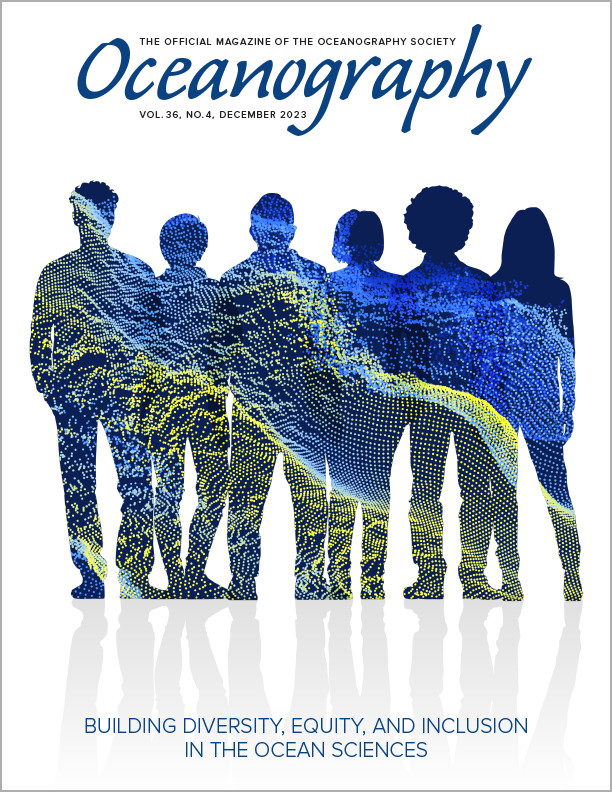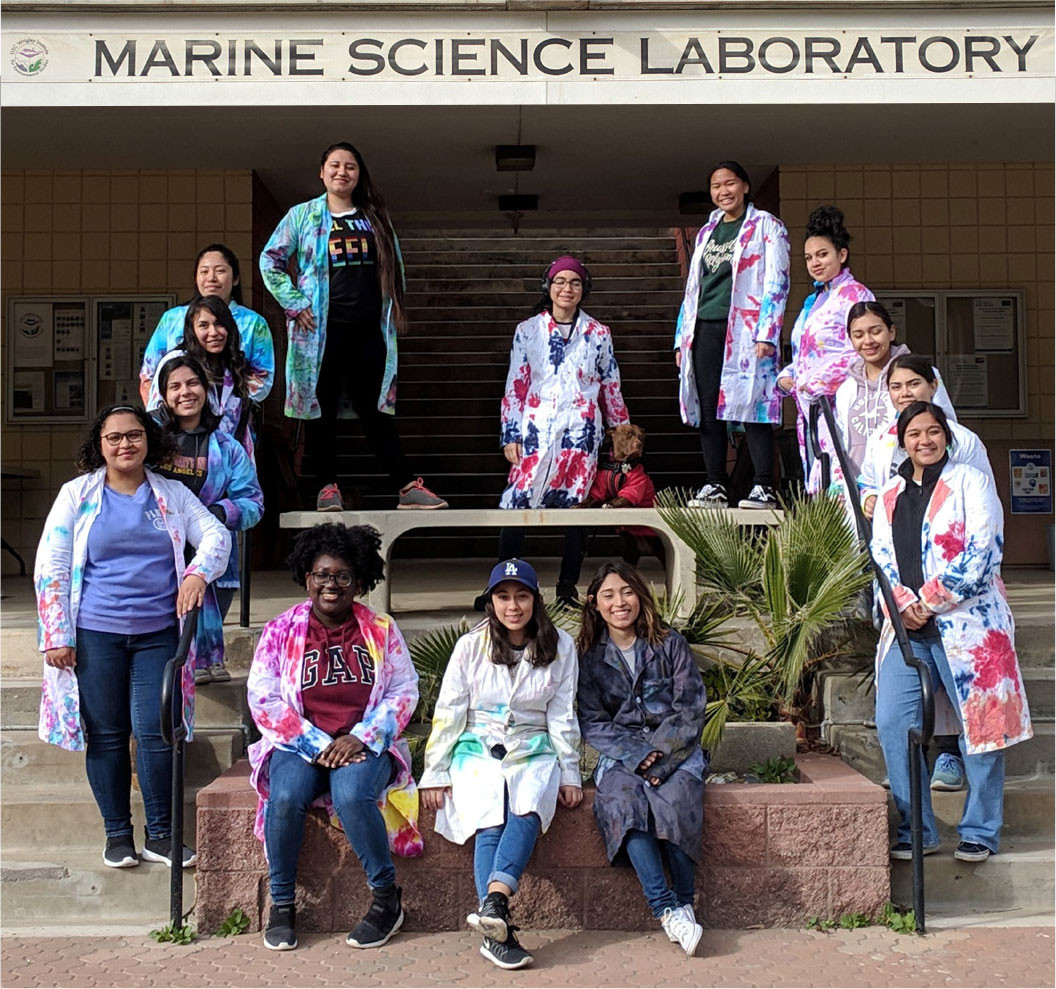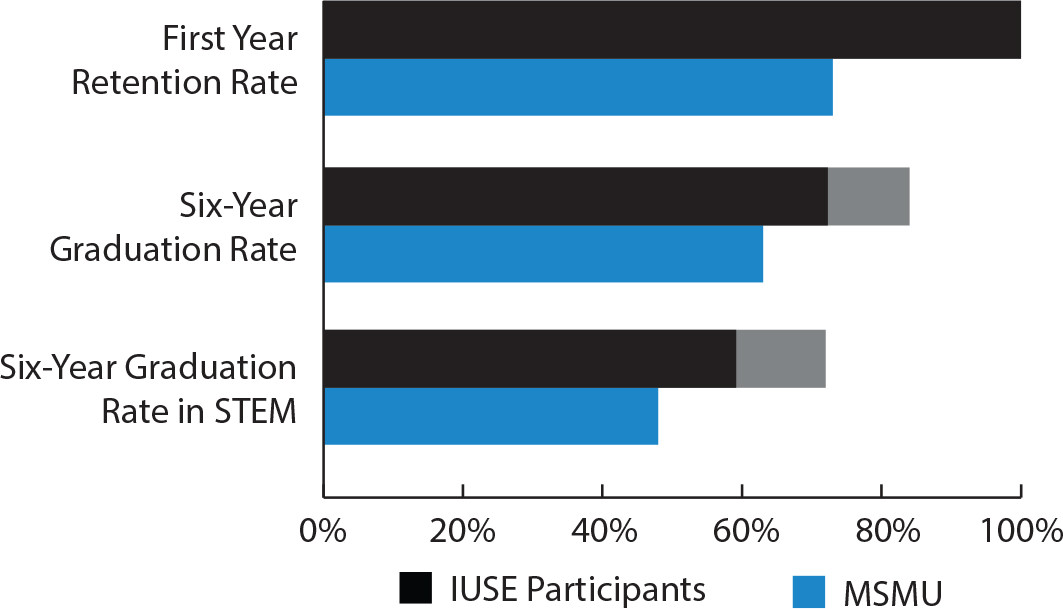Full Text
Introduction
To help strengthen the United States’ capacity for scientific advancement, technological innovation, and climate solutions by building diversity in the geosciences, Mount Saint Mary’s University (a Hispanic Serving Institution, women’s college, and primarily undergraduate institution) partnered with the University of Southern California (a research-intensive university) to establish the GEOPAths Catalina Scholars Program to introduce and expand geosciences opportunities for MSMU students.
Funded by the National Science Foundation’s (NSF’s) program called Improving Undergraduate STEM Education: Pathways into Geoscience (IUSE GEOPAths), the GEOPAths Catalina Scholars (GCS) program leveraged complementary assets on the Mount Saint Mary’s University (MSMU) and University of Southern California (USC) campuses to maximize MSMU student outcomes in the geosciences. MSMU serves a diverse population of 1,500 students. Over half of the student population identifies as first-generation college students, and 60% come from low-income families. Faculty at MSMU have access to research labs, but their primary duties involve teaching and mentoring. USC offers access to state-of-the-art research facilities, including the USC Wrigley Marine Science Center (WMSC) on Catalina Island, research faculty regarded as leaders in their fields, and a large pool of graduate student role models.
Program Description
Each year for three years, the GCS program engaged cohorts of first- and second-year MSMU students (n = 13, 14, and 11, respectively) in year-long co-curricular programming between 2018 and 2021 (omitting 2020 due to the COVID-19 pandemic). Demographics in all three cohorts resembled the overall MSMU campus composition; of 38 participants, 35 self-identified with an underrepresented group in the geosciences (31 as Hispanic/Latinx), and more than half identified as first-generation college students. All participants were STEM majors, most interested in health science professions, which aligns with MSMU’s historical curricular STEM offerings.
Each cohort participated in two geosciences experiential learning programs: a one-week spring break and a two-week summer research-intensive experience at the WMSC (Figure 1). The spring break program provided an immersive, hands-on introduction to oceanography through lectures, lab exercises, and basic field training. The summer research-intensive program brought those students back to WMSC to design and execute small-group, semi-independent coastal research projects that culminated in the development of scientific posters. All students presented their research at MSMU and at a regional science conference. Students also participated in activities throughout the year, including graduate school and geosciences career panels, research talks, data analysis, and field trips, such as oceanographic cruises and visits to research laboratories. The program supported students financially with a completion stipend and covered all participation costs and conference fees. In Year 2, students from prior GCS cohorts were invited back as paid teaching assistants and near-peer mentors.
|
|
Results
To gauge program effectiveness, each cohort was surveyed before and after participating in the program. All cohorts participated in a retrospective survey; all the surveys were administered by a third-party evaluator. Results show that all GCS participants (100%) were retained at MSMU during the year following their participation, compared to a general MSMU first-year retention of 73%. In addition, participants had overall higher graduation rates (84% compared to 63%) and a higher percentage of completed STEM degrees (71% compared to 48%) among students who started as STEM majors at MSMU (Figure 2). Of the 11 students who did not graduate from MSMU with a STEM degree, one transferred to USC as a biology major, five took a leave of absence, and five graduated but changed their majors to non-STEM disciplines. Survey responses showed significant increases in awareness of geoscience knowledge and careers and increased confidence in general STEM skills such as presenting research, engaging with scientific literature, and taking upper-division STEM courses (Figure S1 and Table S1). Feedback confirmed that the program “exceeded expectations” and provided valuable and worthwhile experiences.
|
|
Despite these positive results, students’ perspectives on pursuing a career in geosciences did not change following program participation. For students who entered with a high interest in geosciences, however, the program supported and reinforced their interests, resulting in important career-building placements: seven alumni participated in subsequent geoscience summer research programs (five in NSF Research Experiences for Undergraduates programs), and three alums are currently in geoscience graduate programs. However, most participants who were not already interested in the geosciences did not change their career or academic ambitions. Pre-program surveys revealed that 85% of participants already strongly identified with a health professional career path, and the program did not change that goal, despite students’ satisfaction with the program. These non-geoscience students still demonstrated higher six-year graduation rates and increased retention in STEM majors compared to the general student body at MSMU (Figure 2). It is unclear whether the GCS program directly influenced these positive outcomes or whether high-achieving individuals self-selected into the program. But the program benefited highly motivated students on their STEM paths, expanded access to opportunities and mentorship, and provided MSMU with data demonstrating demand for geosciences/environmental sciences on campus.
Lessons Learned
- Hispanic Serving Institution (HSI)-Research Intensive (RI) partnerships, such as the GCS program, can enhance educational and research experiences for underrepresented students (Allen-Ramdial and Campbell, 2014; Behl et al., 2021).
- Authentic, strong interpersonal faculty relationships are critical in developing and sustaining effective inter-institutional collaborations that best leverage each partner’s resources.
- Scaffolded co-curricular research experiences that support and reinforce STEM interests are high-impact educational practices.
- Exposure to geoscience before college and a college curriculum that includes geoscience-specific options for incoming students may play a role in recruiting and retaining students in geoscience fields.
Based on the success of this program, the MSMU provost office continues to financially support components of the GCS program now that the grant has ended, including the week-long spring break program on Catalina Island. In addition, MSMU has successfully launched an environmental science minor and an environmental studies major. These advances could provide the infrastructure to recruit more students into geoscience fields previously unavailable to MSMU students, while USC has gained an effective partnership to increase the diversity of highly qualified applicants to geosciences-related graduate programs.
The program reinforced the idea that authentic interpersonal faculty relationships are critical to developing and sustaining effective inter-institutional collaborations. Authors Jones (PI at MSMU) and Kim (Co-PI at USC) are long-time collaborators on various research and education programs. Before obtaining GCS funding, they championed a geosciences pilot program at Catalina Island for MSMU students designed to address the lack of geosciences or environmental sciences curricula at the time, and provided preliminary data for the NSF IUSE GEOPAths proposal.
The GCS program also demonstrated the value of inter-campus partnerships in broadening geosciences participation by students at non-R1 institutions via hands-on research opportunities and mentorship while fostering membership in a STEM community. A quote from the post-program survey highlights the strength of the HSI-R1 partnership: “I didn’t think the program would…allow me to work in professional labs with amazing materials and tools. I also didn’t think that I would be able to meet so many amazing professionals.”
Finally, the program showed that students with established interests in geosciences could successfully leverage the experience to secure further training opportunities. GCS reinforced the academic interests of these students, and it supports the literature that states scaffolded co-curricular research experiences are high-impact educational practices (Kuh, 2008). Future recruitment strategies for similar geoscience-focused funding could benefit by targeting students with early college STEM interests who do not yet strongly identify with a professional occupation or by targeting students already interested in geosciences to increase their future success. We hope this can inform future inter-institutional partnerships and federal funding priorities for increasing diversity in STEM and geosciences.



